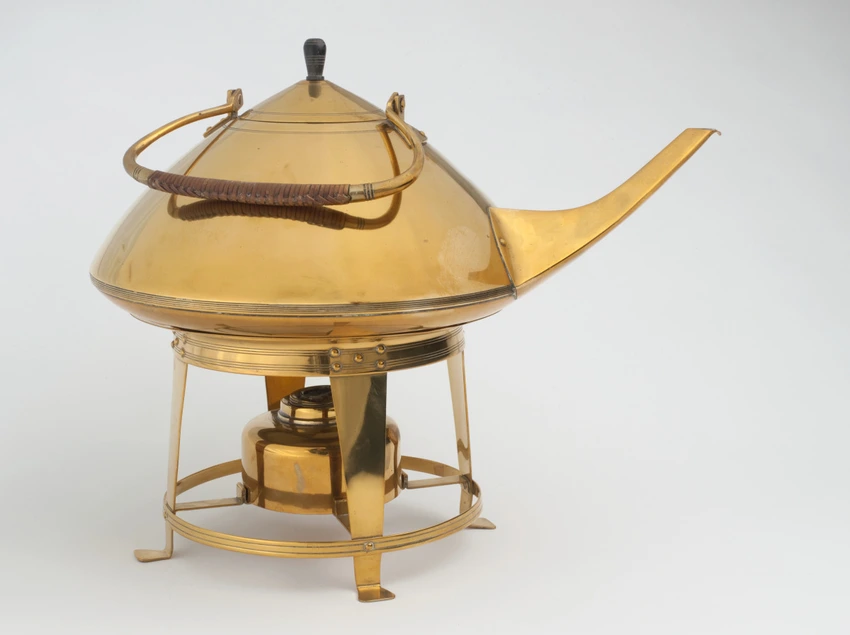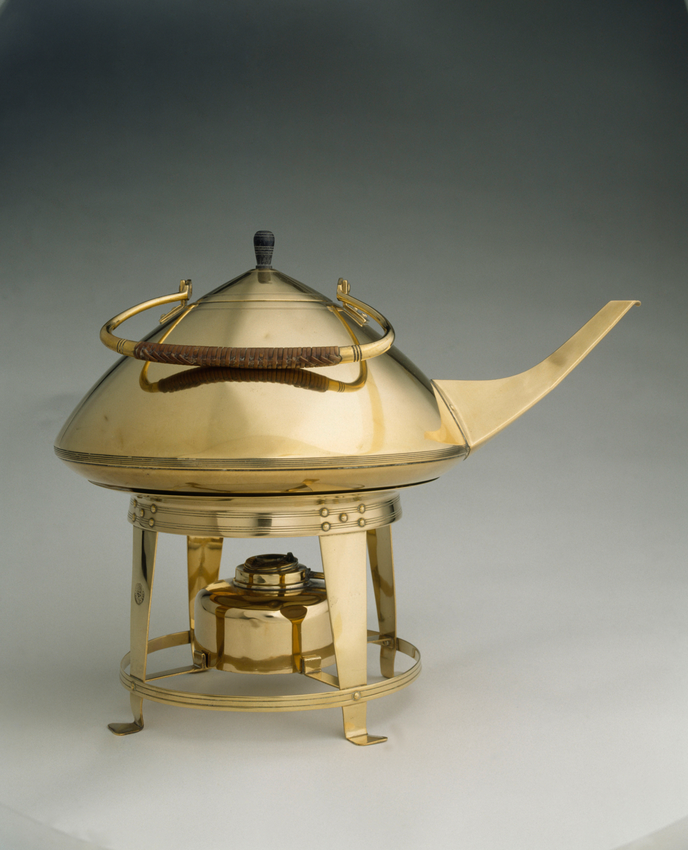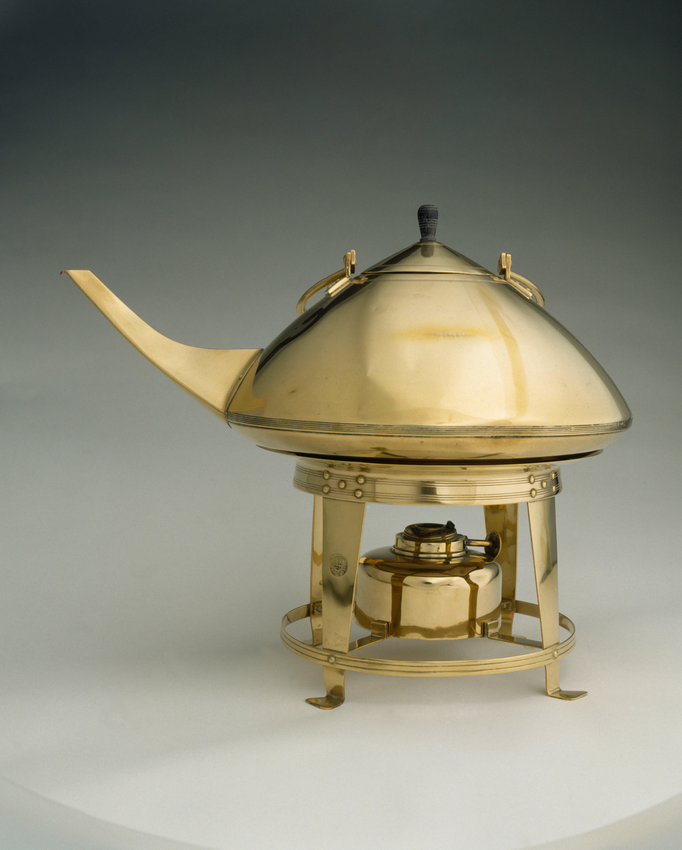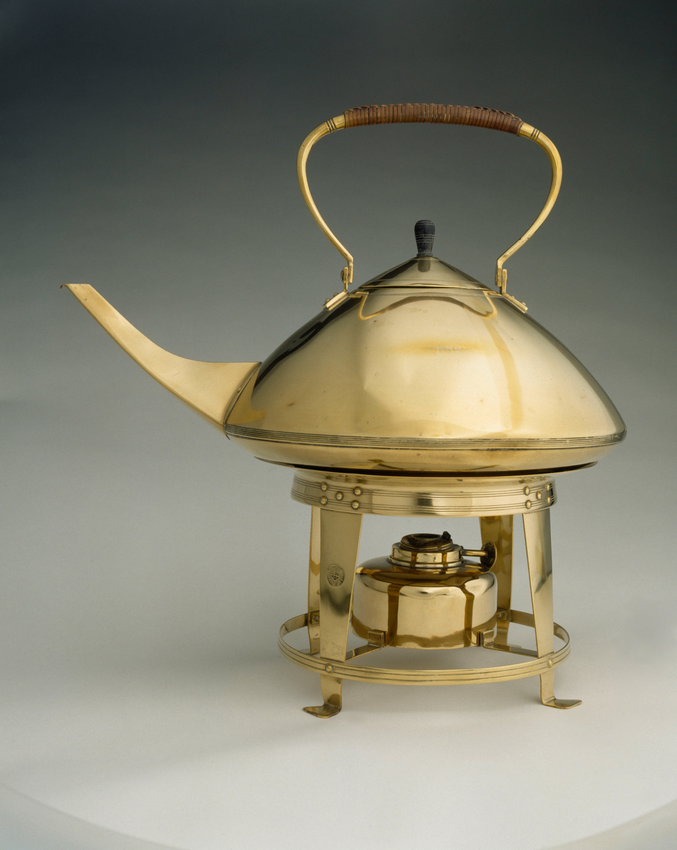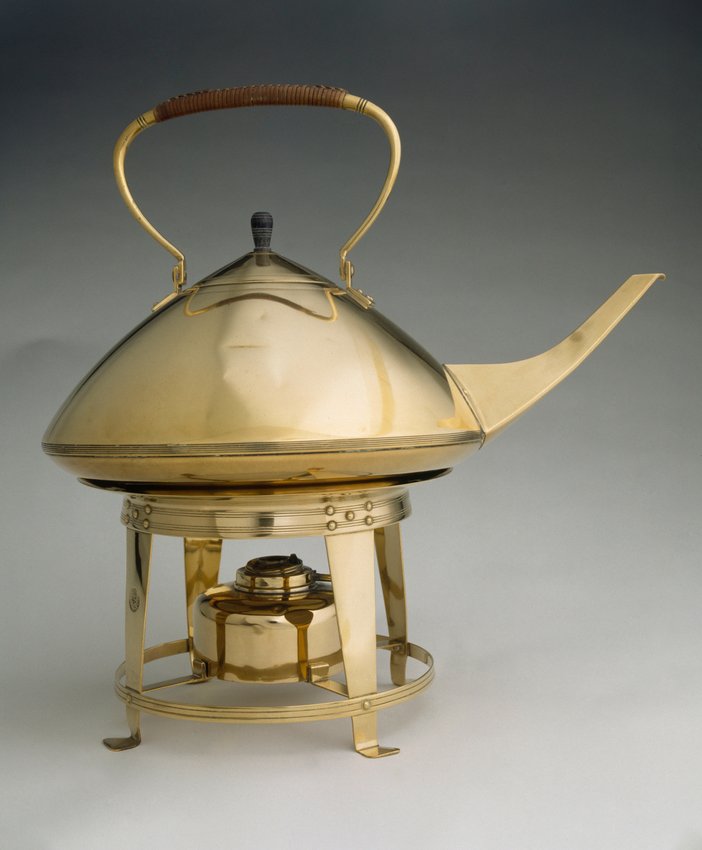Bouilloire sur support avec un réchaud à alcool
After his training as a gold and silversmith in Amsterdam and Saint Petersburg, Jan Eisenlöffel joined the Amstelhoek porcelain factory in Amsterdam in 1896 as artistic director of the metal workshops. In 1901, he left Amstelhoek to set up his own business and founded the rival company De Woning in 1903.
Following Dresser and Benson in England, he created a line of domestic objects in silver, brass and copper, using simple and practical shapes. However, his more austere style, characterised by angular shapes and a fine, linear decoration, set him apart from his British predecessors. His creations – tea, coffee and chocolate services, stoves and lamps, etc. – exhibited in Dresden (1901), Düsseldorf and Turin (1902) and Copenhagen (1904) and published in German interior design magazines, aroused the admiration of Henry van de Velde, in particular: "I know of no other metalworker anywhere at this moment who can produce works of such perfect artistry" (Innen-Dekoration. August 1902).
This kettle was featured in the Dutch section of the International Exhibition in Turin in 1902, and remained in production for a long time. Yet, this example is probably more recent, as the circular mark JE/JAN EISENLÖFFEL appears twice on it. This inscription only appears to have been used between 1903 and January 1908, the period when the artist left Amsterdam to work temporarily for the Vereinigte Werkstätten in Munich.
